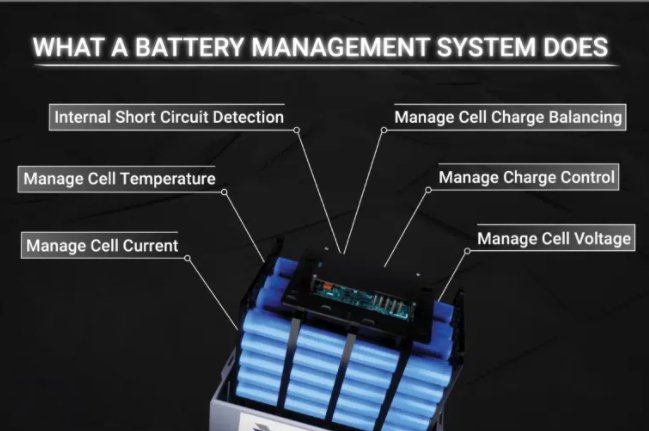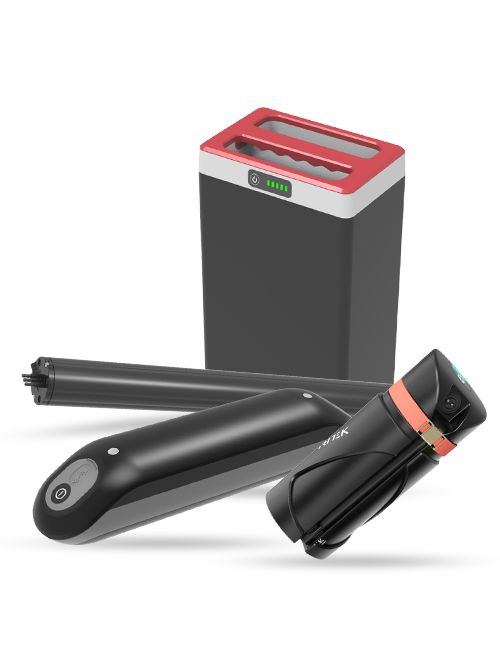As a battery manufacturer in the rapidly expanding electric mobility sector, I understand the paramount importance of battery safety in our e-motorcycles. The growing demand for reliable and risk-free battery technology has led to significant advancements in the field. In this article, I will outline the latest innovations aimed at minimizing risks in e-motorcycle battery packs, ensuring smooth and secure operations for you.

Lithium-ion Battery Safety Concerns – Analyzing Potential Risks in E-Motorcycle Battery Packs
In the world of electric vehicles, lithium-ion batteries have emerged as the standard choice, powering various applications, including e-motorcycles, owing to their high energy density and exceptional performance. However, despite their advantages, these batteries come with inherent challenges that demand our attention from a safety perspective.
One prominent safety concern is the phenomenon known as “thermal runaway,” where an uncontrolled chain reaction of overheating and cell failure can occur within the battery pack. This poses a serious risk of fires and explosions. Moreover, issues like overcharging, external damage, and manufacturing defects can also lead to hazardous situations, making battery safety a paramount consideration in electric mobility.
Advanced Battery Management Systems (BMS): Enhancing Safety and Reliability
Introduction to Battery Management Systems and Their Critical Role
Battery Management Systems (BMS) stand as the guardians of battery safety and reliability in electric vehicles, including e-motorcycles. These sophisticated systems play a pivotal role in continuously monitoring the state of the battery, encompassing crucial parameters such as voltage, temperature, and current. By diligently overseeing these factors, BMS ensures that the battery operates within safe limits, significantly reducing the risk of hazardous conditions.
A professionally designed and well-implemented BMS provides fleet operators with the confidence they need to embrace e-motorcycles for their commercial operations. Understanding the mechanics behind BMS reveals how it safeguards batteries and optimizes their performance.

The Intricacies of BMS: Monitoring and Regulating Battery Performance
The heart of a BMS lies in its ability to vigilantly monitor battery performance in real-time. By constantly assessing battery parameters, the system can swiftly detect any anomalies that may arise during operation. This could include deviations in voltage levels, abnormal temperature fluctuations, or irregular currents flowing through the battery cells.
When discrepancies are detected, BMS takes immediate corrective actions to rectify the situation. One crucial aspect of these corrective measures involves the balancing of cells. BMS ensures that all individual cells within the battery pack charge and discharge uniformly, preventing any cell from being overcharged or over-discharged. Such balance maintenance contributes significantly to prolonging the overall battery life and avoiding premature failure.
Moreover, BMS operates as a steadfast safeguard against the menacing threat of thermal runaway, where a rapid and uncontrollable increase in temperature within the battery pack can occur. By closely monitoring temperature levels, BMS can intervene at the earliest signs of thermal runaway, preventing its escalation and mitigating potential risks of fires or explosions.

Embracing the Future: Cutting-Edge BMS Features for Real-Time Risk Assessment
In our quest for continuous improvement and unparalleled safety standards, modern BMS systems come equipped with cutting-edge features, including advanced algorithms and artificial intelligence. These intelligent systems elevate battery safety to new heights by proactively identifying potential risks in real-time.
Through the sophisticated analysis of data and trends, BMS can predict and anticipate safety risks, such as potential cell failures or critical temperature spikes, before they escalate into critical situations. This predictive capability enables riders and fleet operators to receive timely alerts and warnings, empowering them to take swift and decisive actions to avert hazardous conditions.
The integration of artificial intelligence augments the BMS’s capacity to adapt and optimize battery performance according to varying driving conditions and usage patterns. As a result, e-motorcycles equipped with such cutting-edge BMS solutions can maintain peak efficiency and safety throughout their operational lifespans.
Thermal Management and Cooling Techniques: Safeguarding E-Motorcycle Batteries
Understanding the Impact of Temperature on Battery Safety and Performance

Temperature fluctuations wield a profound influence on the safety and performance of e-motorcycle batteries. Extreme heat can accelerate cell degradation, leading to reduced battery lifespan and compromised overall performance. Conversely, extremely cold temperatures can impede the battery’s efficiency and capacity, affecting its ability to deliver optimal power.
Maintaining the battery within an optimal temperature range is paramount for preserving battery health and ensuring its longevity. Effective thermal management strategies play a pivotal role in achieving this goal, safeguarding battery packs from adverse temperature effects.
Innovations in Thermal Management Systems to Prevent Overheating
In pursuit of uncompromising battery safety, manufacturers have made remarkable strides in the development of advanced thermal management systems for e-motorcycle batteries. These cutting-edge systems employ innovative cooling techniques to regulate the battery’s temperature and prevent overheating during charging and discharging cycles.
Among the notable cooling techniques utilized, liquid cooling and phase change materials have garnered considerable attention. Liquid cooling employs a liquid coolant to absorb and dissipate heat generated during battery operation, ensuring consistent and controlled temperatures within the pack.
Phase change materials, on the other hand, leverage the remarkable ability of certain materials to undergo phase transitions with temperature changes. These materials absorb heat when the battery temperature rises above a certain threshold and release it when the temperature drops below that point, providing effective temperature regulation.

Advantages and Limitations of Different Cooling Methods for E-Motorcycle Batteries
While liquid cooling and phase change materials exhibit commendable performance in managing battery temperatures, it is essential to consider the advantages and limitations of each approach.
Liquid cooling offers superior heat dissipation capabilities, making it particularly well-suited for high-power applications and continuous heavy usage scenarios. However, it may require additional space within the battery pack, and the presence of coolant can add to the overall weight.
Phase change materials, on the other hand, present a more compact and lightweight solution for thermal management. They are particularly effective in moderating temperature fluctuations during transient conditions. However, their efficiency can be affected if the battery operates within a narrow temperature range for extended periods.
As an alternative, air cooling represents a simpler and lighter option. It relies on the circulation of air to dissipate heat from the battery pack. While it may be adequate for certain e-motorcycle use cases, it might encounter limitations in extreme weather conditions or during demanding operational scenarios.
Ultimately, the choice of thermal management technique depends on the specific requirements of the e-motorcycle application and the desired balance between performance, space constraints, and weight considerations.
Multi-layered Protection Mechanisms: Safeguarding E-Motorcycle Batteries
Examining Multi-layered Safety Measures in Modern E-Motorcycle Battery Packs
In the pursuit of uncompromising battery safety, modern e-motorcycle battery packs have implemented a comprehensive array of multi-layered protection mechanisms. These sophisticated safety features work in tandem, creating robust barriers to prevent both internal and external risks from culminating in catastrophic failures.
The Role of Physical Barriers, Insulation, and Redundancy
One of the primary components of these multi-layered protection mechanisms is the implementation of physical barriers. Reinforced battery casings act as the first line of defense against external impacts, shielding the delicate battery cells from potential damage during collisions or accidents. The sturdy casings significantly reduce the risk of critical battery failures due to external forces.
Additionally, insulation materials play a crucial role in preventing potential short circuits within the battery pack. By carefully isolating the individual cells and components, insulation minimizes the chances of electric arcing, which could lead to hazardous conditions and battery malfunctions.
Moreover, redundancy in safety systems stands as a vital aspect of these multi-layered protection mechanisms. By incorporating duplicate safety features, such as redundant monitoring circuits and fail-safe switches, e-motorcycle battery packs are engineered to withstand the failure of a single component without compromising overall safety. This resilient approach ensures that no single point of failure can lead to catastrophic consequences, providing an added layer of safety assurance.
Ensuring Continuous Operation and Preventing Catastrophic Failures
The seamless integration of multi-layered protection mechanisms is instrumental in ensuring the continuous and reliable operation of e-motorcycle battery packs, even in the face of challenging conditions. By adopting a multi-tiered approach to safety, these battery packs can withstand various stressors and potential risks, delivering peace of mind.
During the rigorous demands of daily usage and diverse environmental conditions, the multi-layered protection mechanisms act as a cohesive safety net, averting critical failures and maintaining the battery’s integrity. This resilience is especially crucial, as it helps prevent costly downtime and repairs, ensuring optimal uptime and productivity.
Furthermore, these safety features contribute to the overall longevity of the battery pack, allowing e-motorcycles to maintain peak performance over an extended operational lifespan. The reliable and secure operation of the battery packs fosters greater confidence in the electric mobility sector, encouraging further adoption of e-motorcycles for commercial fleet operations.
Fire Suppression and Containment Solutions: Safeguarding E-Motorcycle Batteries
Analyzing the Risk of Fire Incidents in E-Motorcycle Batteries
While rare, the risk of fire incidents in e-motorcycle batteries remains a critical concern. The consequences of such incidents can be severe, not only causing significant damage to the vehicles but also posing a threat to public safety and tarnishing the reputation of electric mobility.
Embracing the Latest Fire Suppression Technologies
In response to the imperative need for enhanced battery safety, manufacturers have made remarkable strides in the development of advanced fire suppression technologies, specifically tailored for electric vehicle batteries. These cutting-edge systems are designed to rapidly and effectively control and extinguish battery fires, minimizing the potential damage and mitigating associated risks.
The fire suppression technologies encompass a diverse array of extinguishing agents and methods, each uniquely suited to address varying scenarios. From traditional dry powder and foam-based extinguishers to more innovative high-pressure water mist systems, manufacturers are continuously exploring new possibilities to combat battery fires with utmost efficiency.
With the integration of these state-of-the-art fire suppression technologies, e-motorcycle batteries are equipped to withstand fire-related incidents, assuring of the highest safety standards.
The Vital Role of Containment Solutions
In the unlikely event of a battery failure, containment solutions emerge as vital elements in limiting the extent of damage and preventing the escalation of hazardous situations. These solutions are meticulously designed to confine the effects of battery failure to a specific area, effectively preventing the spread of fire or release of hazardous materials.
By containing the incident within a designated enclosure, nearby components and systems are shielded from harm, reducing the risk of collateral damage and facilitating a swift and organized response to the incident.
Incorporating these containment solutions showcases a proactive approach to safety, signifying a commitment to the well-being of riders, pedestrians, and property alike.
The implementation of robust fire suppression and containment measures demonstrates the electric mobility sector’s dedication to achieving unmatched safety standards. As fleet operators, we must prioritize vehicles equipped with these advanced safety technologies to mitigate potential risks effectively.
Impact of Battery Safety on Total Cost of Ownership (TCO): Balancing Investment and Long-Term Benefits
Evaluating the Financial Implications of Battery Safety and Reliability
Upfront investments in advanced safety technologies can impact the initial cost of acquiring electric motorcycles for your fleet. However, it is essential to recognize that these seemingly higher costs are an investment in the long-term sustainability and efficiency of our operations.
Understanding the financial implications of battery safety allows you, to make informed decisions that strike a balance between short-term expenditures and long-term gains.
How Investing in Advanced Safety Features Affects TCO for Fleet Operators
When we choose to invest in advanced safety features for e-motorcycle fleet, such as robust Battery Management Systems (BMS) and sophisticated thermal management systems, we are making a strategic decision to mitigate potential risks and minimize costly disruptions.
By proactively implementing these safety technologies, we can significantly reduce the likelihood of battery failures, which can lead to substantial downtime, repairs, and even costly battery replacements. The proactive approach to battery safety ultimately results in higher uptime and increased productivity for your fleet, leading to enhanced operational efficiency.
Furthermore, a focus on battery safety contributes to extending the lifespan of our e-motorcycle batteries. As these batteries operate within safe temperature ranges and are subjected to fewer stressful conditions, their overall health and performance are preserved, translating to longer-lasting battery packs and reduced need for premature replacements.
Conducting a Comprehensive Cost-Benefit Analysis for B2B Customers
Conducting a comprehensive cost-benefit analysis is an essential step in making informed decisions when selecting e-motorcycle batteries for our commercial operations. This analysis goes beyond merely comparing initial costs and delves into the long-term financial benefits that enhanced battery safety and reliability can deliver.
In the cost-benefit analysis, we consider factors such as reduced maintenance costs due to fewer battery failures, lower expenditure on replacements, and potential insurance premium savings resulting from enhanced safety features. These financial gains contribute to an overall reduction in the Total Cost of Ownership (TCO) for your e-motorcycle fleet.
Moreover, prioritizing battery safety not only safeguards the well-being of our riders but also promotes positive brand reputation and customer trust. Customers and clients alike value the commitment to safety, and this can result in increased loyalty and preference for our services, positively impacting the bottom line.
Conclusion
With the latest innovations in battery management systems, thermal management, multi-layered protection mechanisms, fire suppression, and containment solutions, we can ensure that your e-motorcycle fleets operate smoothly.



